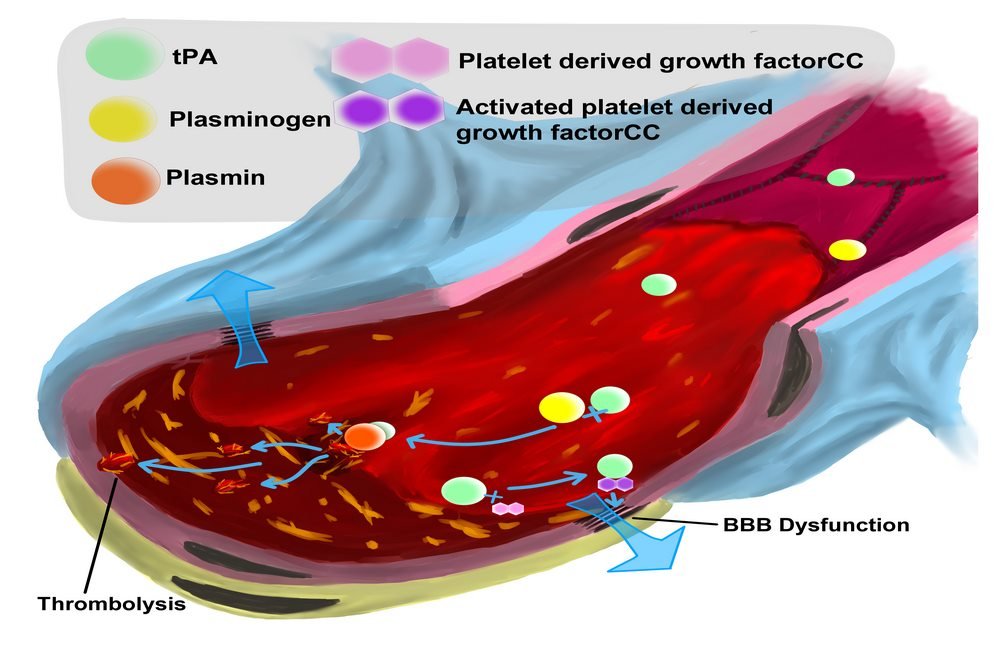Treatment and medication

Understanding the pathophysiology of stroke has enabled scientists to come up with several treatment plans. There are new and inventive methods of interventions available nowadays. Stroke tends to have a crucial acute phase. Studies indicate a better outcome of procedures that are started early, soon after the onset of stroke symptoms. The application of the F.A.S.T strategy to call in an emergency and timely arrival to the hospital is the first step to ensure the survival of the patient. A proper diagnosis of the type of stroke is essential. Furthermore, a lot of specific procedures require cerebral imaging to know the exact location of the clot or bleeding. [10]
Treatment for ischemic stroke
Immediate medication
ischemic stroke treatment involves dealing with the clot. The only currently approved drug is tissue plasminogen activator (tPA). It is a thrombolytic drug also known as “clot buster” given intravenously. It breaks down the clot and re-establishes the blood flow to the ischemic tissue. However, it has to be administered within 3-4 hours of the onset of stroke symptoms, to be effective. Another thing to be noted about this medication is that it only works for ischemic stroke. It can, in fact, worsen the hemorrhagic stroke by causing excess bleeding.
Tissue plasminogen activator can also be administered intra-arterially by first invading the clot site by a guided catheter. This method is more efficient and has a greater intervention time limit, but is not a widely accessible procedure at most hospitals.
